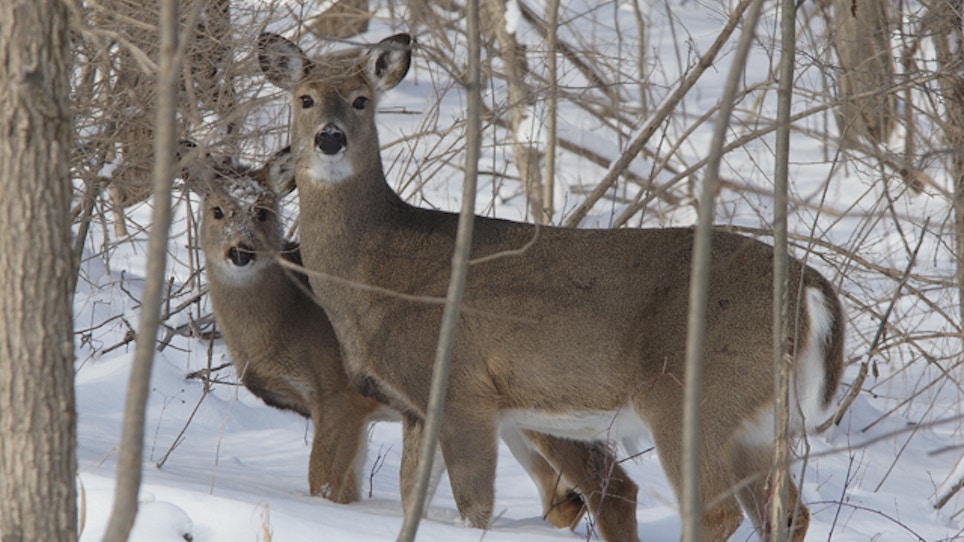Still-hunting whitetails in the late season is no walk in the park. For starters, there are fewer bucks afield, especially if your state has a lengthy firearms season. And, to make matters more difficult, these remaining skittish bucks have also taken refuge in places most hunters can't penetrate, such as steep hillsides thick with downed timber, deep swamps and — that bane of us all — posted land.
The key to locating a racked buck now is to focus on available food supplies. In farm country, cornfields and wind-swept alfalfa lots are two favorites. If undisturbed, they can easily draw bucks from a mile or more away. In heavily wooded areas, south-facing hardwood ridges, hardwood river bottoms, creek beds, swamps and clear-cuts attract the most deer, especially if there is adequate thermal cover nearby. Long-forgotten apple orchards are another favorite.
Your job now is to sneak and peak these feeding areas with caution by using terrain features and all available cover to your advantage. Keep in mind that the colder the temperatures, the more likely the bucks will be bedding nearby. If the temperatures plummet to single digits, you might even catch one feeding in the middle of the day.
The biggest impediment, however, is snow. A fresh snowfall can help muffle your forward progress, and it may help you locate a racked buck or two more quickly. But when a crust appears, still-hunting can be a most demanding adventure. Here's what you can do.
Evening hunts are more productive, so sneak into your own transition zone adjacent to a preferred late-season feeding area an hour or so before dusk, and wait a half-hour or so for things to calm down. Then, by taking only one or two steps at a time, slip forward, keeping your eyes and ears sharp. Don't plan on still-hunting more than 50 to100 yards under these conditions.
The good news is that when the snow is loud and crunchy, you are more likely to hear a deer breaking through the icy crust first. The bad news is you will have not be able to move once you hear him, and that means he might just saunter by without giving you a clear opportunity. In the world of the still-hunter, such occurrences are nothing new.
The only consolation is knowing that buck's general whereabouts for next fall.






